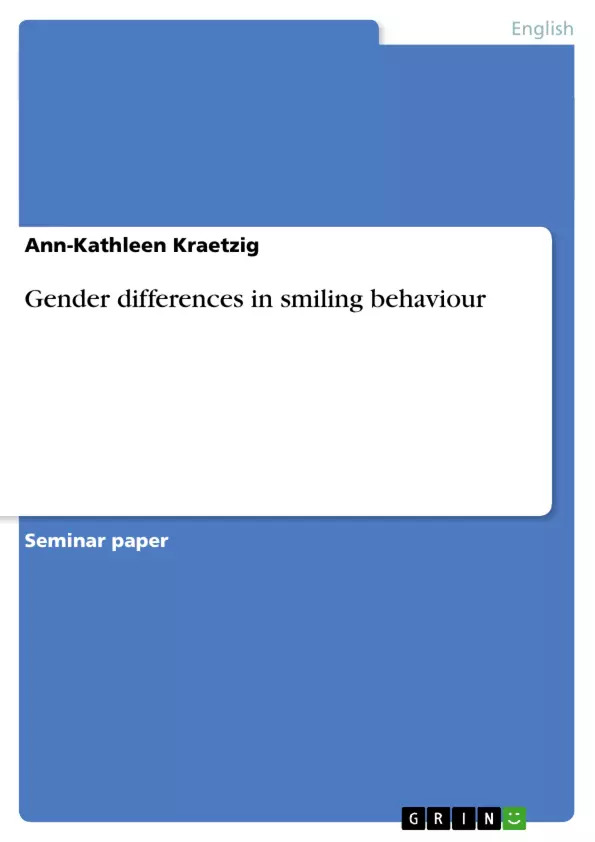Nonverbal communication, and especially facial expression, is a highly interesting and highly complex theme. First, there are many different facial expressions and for each expression even more different hypothesis and opinions. To reduce this complexity, I want to concentrate on just one aspect of facial expression, which is smiling. As “smiles are the most easily recognized facial expression” it offers a great variety of aspects for research, e.g. whether there are cultural differences and whether facial expressions are due to nature or nurture. Although they are all very interesting, I want to concentrate on the aspect of gender differences.
Therefore, I will begin with a more general part presenting what a smile is, what it is used for and which differences there are. Then there will be a greater part on gender differences and the various hypothesis and thesis around it. Finally, I will present my own empirical study, which is an observation of the anchormen and women on CNN, focusing on their smiling behaviour in connection with specific utterances. In this way, I will also develop my own hypothesis.
Inhaltsverzeichnis (Table of Contents)
- I. Introduction
- II. The smile
- III. Gender differences in smiling behaviour
- IV. Empirical study
- V. Conclusion
- VI. Literature
Zielsetzung und Themenschwerpunkte (Objectives and Key Themes)
This term paper aims to explore the complexities of gender differences in smiling behavior. It delves into the various interpretations of smiling, examining the role of cultural influence and the nature versus nurture debate.
- The nature and function of smiling
- The concept of gender differences in smiling behavior
- Various hypotheses and theories surrounding gender differences in smiling behavior
- Empirical study of smiling behavior in a specific context
Zusammenfassung der Kapitel (Chapter Summaries)
- I. Introduction: This chapter introduces the topic of nonverbal communication, particularly focusing on facial expressions and smiling. It outlines the scope of the paper, focusing on gender differences in smiling behavior and highlighting the importance of understanding cultural influences and the nature-nurture debate.
- II. The smile: This chapter provides a comprehensive definition of smiling, drawing upon scientific literature and exploring the physiological and psychological aspects of this facial expression. It examines different types of smiles, including the Duchenne smile and the Pan American smile, and discusses their respective functions and interpretations.
- III. Gender differences in smiling behaviour: This chapter delves into the complexities of gender differences in smiling behavior. It explores various hypotheses and theories that have been proposed to explain these differences, examining the influence of social norms, gender roles, and cultural expectations.
- IV. Empirical study: This chapter presents a detailed account of an observational study conducted on the smiling behavior of news anchors on CNN. It examines the correlation between their smiling behavior and specific utterances, contributing to the understanding of gender differences in smiling behavior in a specific context.
Schlüsselwörter (Keywords)
This term paper explores the interplay of nonverbal communication, gender differences, and smiling behavior, drawing upon research related to facial expressions, cultural influence, social norms, and empirical observation.
- Quote paper
- Ann-Kathleen Kraetzig (Author), 2006, Gender differences in smiling behaviour, Munich, GRIN Verlag, https://www.grin.com/document/73871



